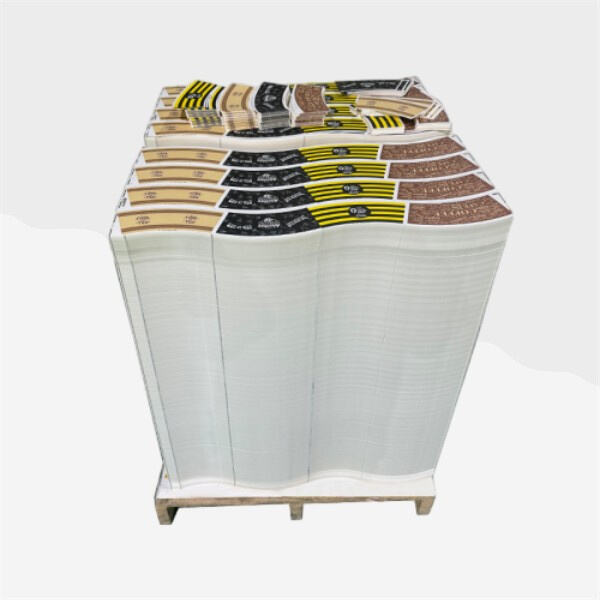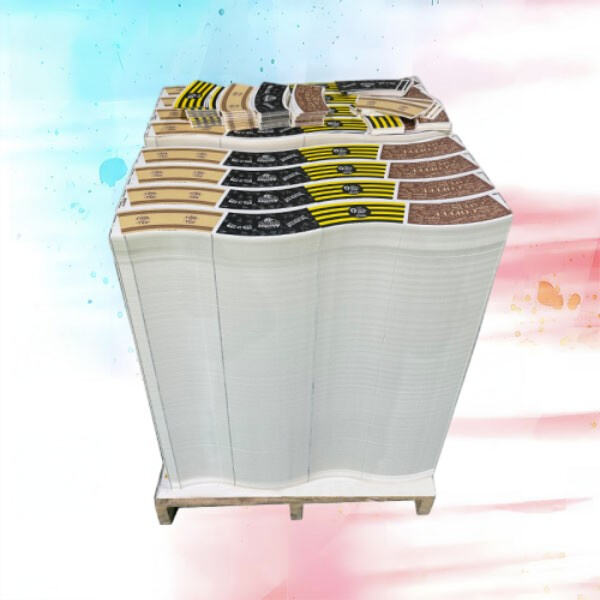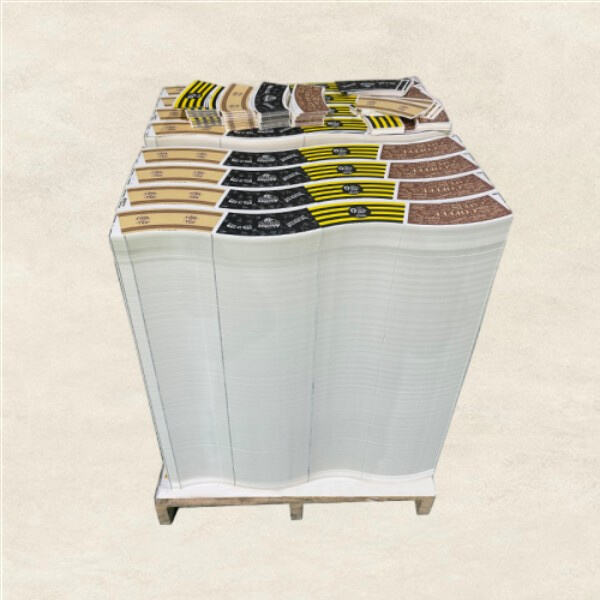Papieren bekertjes zijn meestal een perfecte creatie gemaakt van papier - wat, zoals we al weten, komt uit bomen. Het papier voor deze bekertjes wordt gesneden uit bomen. Maar in veel van deze bekertjes zit ook een honderden jaren oude laag. Deze laag houdt ze goed warm en voorkomt dat het bekertje lekt, wat belangrijk is! Het materiaal heet polyetheen (of PE voor kort).
Het kiest papier als de geschikte drager, omdat we deze materiaalsoort biodegradabel in ons geheugen hebben opgeslagen (het kan zich ontbinden in de omgeving en is herbruikbaar), maar het heeft een klein spelletje: een PE-beleg. Dit komt doordat we bij het recyclen van de blikken PE en papier moeten scheiden, wat ingewikkeld lijkt en meer tijd vereist. Dus zorg ervoor dat je zoekt naar bekers die op een milieuvriendelijker manier geproduceerd zijn.
Bamboe — Het snelst groeiende plant per hectare sneller dan bomen. Dit maakt het mogelijk om veel items in een zeer korte tijd te produceren, waaronder papieren bekertjes. Dit maakt bamboe gemakkelijker toe te passen dan bomen die jaren kunnen duren om te groeien. Dit is een uitstekende eigenschap van bamboe, dat kan worden verwerkt tot papieren bekertjes die milieuvriendelijker zijn.
Een ander milieuvriendelijk enkele gebruiksbeker waar je gebruik van kunt maken zijn plantaardige plastic. Deze plasticsoorten kunnen herhaaldelijk worden gekweekt, omdat ze gemaakt worden van hernieuwbare materialen zoals maïs of suikerriet. Nog indrukwekkender, veel van deze plantaardige plasticsoorten zijn ook composteerbaar na gebruik. Dit maakt ze een veel superieure en milieuvriendelijke keuze dan normale plastic.

Gerecycleerd papier zal ook een geweldige materiaal zijn voor gebruiksschalen. Deze methode wordt uitgevoerd door gebruik te maken van gebruikt papier zoals oude kranten of karton, en het terug te converteren tot nieuwe producten. Gerecycleerd papier is ook een ander materiaal dat de omgeving tevreden houdt omdat het afval beperkt tot een zekere mate, wat anders duizenden jaren op stortplaatsen zou belanden!

Er zijn verschillende stappen die in het proces van gebruiksschalen van goede materialen worden meegenomen. Het begint met het verzamelen van de grondstoffen. Bamboe/plant - Schalen worden geoogst door bamboe en/of de bijzondere plant te kappen, die vervolgens wordt vermalen tot pulp. De eerste is dat als de schalen gemaakt worden met gerecycleerd papier, moet iemand het ook innen en converteren naar pulp.

Dit heeft de vorm van bekers nadat de pulp is gelezen en vervolgens door drogers wordt gehaald. Vervolgens worden de bekers voorzien van een beschermende laag om te voorkomen dat je drankjes te heet worden en lekken. Als we ecovriendelijke routes kiezen, bestaat de laag vaak uit composteerbare materialen zoals maïs of suikerriet die zacht zijn voor de planeet.
bedrijf de voornaamste producent van en verwerker van recyclebare, milieuvriendelijke en biologisch afbreekbare verpakkingen voor voedingsmiddelen. Onze onderneming beschikt over hoogwaardige folie-aanbrengmachines met een zeskleuren flexdruksysteem inclusief een dwarssnij- en slittermachine, gespecialiseerde stansmachines. Ons bedrijf werd opgericht met het concept van wegwerp papieren beker grondstof op basis van een mensgerichte aanpak en betrouwbare werking voor de ontwikkeling van een win-winrelatie. Onze missie is het creëren van milieuvriendelijke voedselverpakkingen en ons doel is het leveren van uitstekende diensten om klanten te imponeren.
We zijn toegewijd aan het waarborgen dat producten voldoen aan de hoogste kwaliteitsnormen en beschikken over deskundige klantenservice. Onze ervaren medewerkers zijn 24/7 beschikbaar om uw behoeften te bespreken en volledige klanttevredenheid te garanderen. Met vele jaren ervaring in het exporteren, verkopen wij onze producten goed in de Verenigde Staten, Zuid-Azië, Oost-Azië en ook Afrikaanse landen. Onze onderneming levert altijd grondstoffen voor wegwerpbekers van papier voor markten wereldwijd. We staan open voor OEM- en ODM-opdrachten. Of u nu kiest voor een van onze huidige producten uit onze catalogus of hulp wenst van onze ingenieurs voor uw specifieke toepassing, u kunt contact opnemen met ons klantenservicecentrum voor al uw inkoopbehoeften.
Het bedrijf gevestigd in Dongguan, Guangdong-provincie, China. Het bedrijf werd opgericht in 2012 en is een betrouwbare fabrikant gespecialiseerd in productie, ontwikkeling en verkoop van PE-beklede papierrollen, papieren bekers, papieren kommen, papierbekers met ventilator, en PE-beklede papierplaten. De fabriek is gevestigd op een terrein van 40 acre, wat 60.000 m² beslaat. Fabrieksvloeroppervlak. Wij bieden een single-point service voor de grondstof verwerking van wegwerp papieren bekers, inclusief PE-bekleding, printen, stansen, stansverdeling en dwarszagen. Wij zijn ook geïnteresseerd in het aanbieden van grafisch ontwerp en sample modellen, PE-bekleding, snijden, printen en verpakking voor producenten van papieren bekers, papieren kommen, en voedselverpakkingen.
Het bedrijf is gecertificeerd volgens ISO9001, CE, SGS en diverse andere certificeringen. Er zijn bovendien meer dan 40 patenten die beschermd worden door eigen intellectuele eigendomsrechten. Het bedrijf werd aangemerkt als een "hoogtechnologisch bedrijf binnen de provincie". Wij hechten aan het mechanisme van overleving door concurrentievermogen, effectiviteit door kwaliteit, vooruitgang door technologie en voortgang door management. Wij streven voortdurend naar de grondstoffen voor wegwerpbare papieren bekers en realiseren duurzame en milieuvriendelijke bescherming, gezond en milieutechnisch duurzame ontwikkeling die nationale en internationale klanten beter dient.